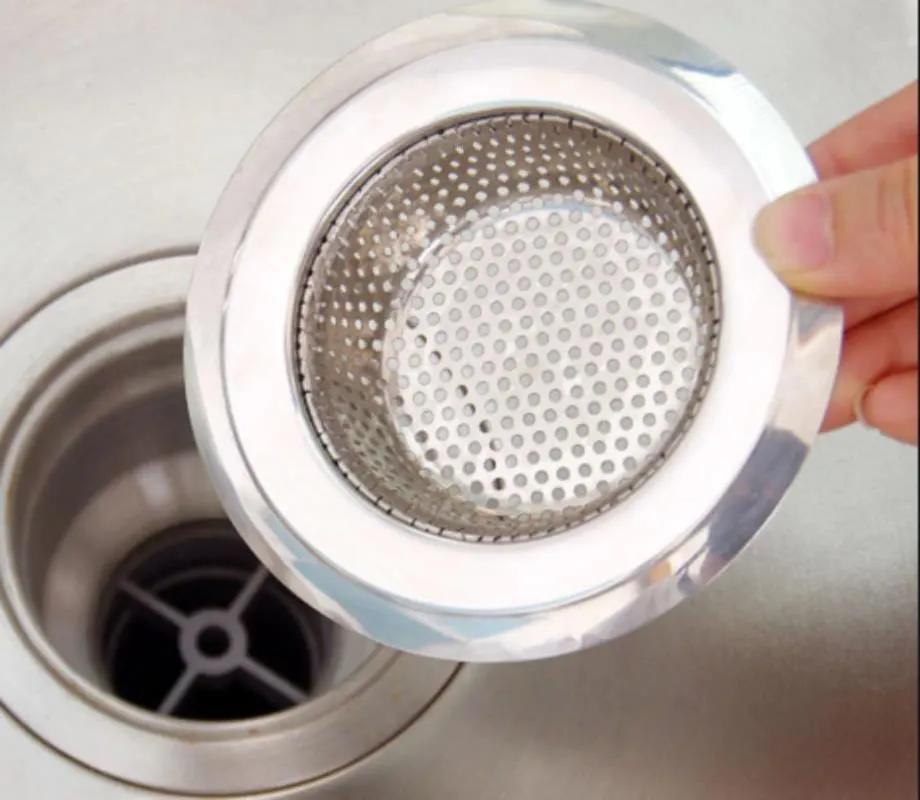You've got a problem when you're washing dishes and the water stops draining. That standing water means your kitchen sink pipes are clogged with food and grease and need to be cleared out. But that doesn't mean you should douse your sink with Drano. We've actually got a few methods that don't require pouring chemicals down the drain at all.
The good news is that you may already have the items in your cabinets that you'll need to get your pipes flowing again. Some methods require a simple mixture, while others require some extra elbow grease and suctioning power to clear your drain. But these methods are pretty inexpensive compared to calling a plumber.
Depending on how bad the clog is, you may need to follow all of these techniques and repeat them a few times to unclog your sink. And if your kitchen sink has a garbage disposal, try running that before you begin to grind any food that could be sitting in there (a common reason for clogging). Here are the best ways to unclog your sink and send the stagnant, smelly water away.
Use a plunger
If you've got standing water in your sink, the best way to get it to go down the drain is to plunge it. You'll need a plunger -- but preferably not the one from your bathroom (yuck), so use a clean one. It's a good idea to store a small plunger beneath your sink for this very purpose.
If you have a double sink, make sure to plug the other side before you begin, to keep the seal intact and prevent any water from burbling out the other end.
Place the plunger over the drain in your sink to create a suctioning effect and firmly pump down until the water begins to clear out. After all the stagnant water is out of the sink, run clean water down the drain to make sure it's clear. If it isn't, you'll need to plunge again.
Warning: Be careful with the way you pump the drain, as you could bring more food and water into your sink. The goal is to send the food through the drain, so avoid pumping up fast unless you want a mess. Carefully release the plunger's grip on your sink so you don't suck anything out of the drain.
16 things you should never put in the garbage disposal
See all photos+17 MoreUse a baking soda and vinegar mixture
If you don't have a clean plunger on hand, you can use the tried-and-true cleaning technique of combining baking soda and vinegar. This creates a bubbling reaction that breaks up larger pieces of muck so that they'll go down the drain easily.

First, start off by boiling water in a kettle and then pour it down the drain (electric kettles can heat water anywhere, but it doesn't matter how you get the boiling water -- just be careful not to spill).
It needs to be boiling and not just hot tap water so that it can dissolve and loosen up food particles and smaller blockages. This will help flush out the drain, but it won't completely clear out the clog. However, if you've got PVC pipes, it's best to skip this step because it could loosen the pipe seals. You can still flush with hot tap water after you've done the vinegar and baking soda treatment.
Now playing:Watch this: How to clean your oven with baking soda and vinegar1:30Next, pour about a cup of baking soda down the drain and let it sit for a few minutes. You may need to use a wooden spoon, rubber spatula or plastic utensil to help push the baking soda down the drain. I'd avoid using metal or anything sharp so as not to scrape up your sink.
After the baking soda has sat for a bit, pour in a cup of white distilled vinegar. The combination will create a fizzy reaction to loosen the clog. Use a stopper and plug the sink for about 15 minutes. During this time, boil another pot of water. After the time is up, pour the boiling water down the sink to flush it once more.
Repeat this regularly to prevent buildup in the future.
Clean the P-trap of old food and grease
If you've tried every option but your sink still won't drain, you may need to clean the P-trap. This is the part of your sink that keeps debris and sewer gases from rising up through the drain.
First, carefully insert a straightened coat hanger through the opening in your sink to dislodge any foods that could be stuck in the drain. Unfortunately, if that doesn't work, you'll have to take the P-trap apart.
The P-trap is located underneath the sink and is shaped like a U. To remove it, put on a pair of gloves (like plastic dishwashing gloves or leather gloves that you don't mind getting dirty) and place a bucket, trash can or garbage bag under the pipes to catch any food or water. If it's on too tight, use pliers to help loosen the fittings.
Once it's removed, use something firm like a knife or coat hanger to push the food through and scrape the sides for any grease. Now you can reattach the P-trap and watch your water drain like it's supposed to.
Take good care of your garbage disposal
The garbage disposal is one of the most common reasons your sink may be clogged. There may be a spoon or some food that's backing it up. In order to prevent your sink from becoming clogged again, you'll want to follow these tips.
What's a creative way you've unclogged your kitchen sink? Let us know in the comments.
Ready to unclog the plumbing throughout the rest of your house? Check out how to clean your shower head the stupid-easy way and how to unclog a toilet without a plunger.
